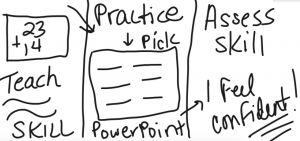Aha Moment….
Hello Readers,
How is everyone? Recently, I have learned about Cosmopolitianism in my grad class. It made me think to use technology more and to use it more creatively. I really want my students to communicate globally. I would love to have them have meetings and connections with people around the world. This would make them learn about different cultures and communities. When we are able to learn more about our differences, we learn that they make us unique. One of the ISTE standards, is to have our students to be global collaborators. Global collaboration is easy with technology beacuse we can use Twitter or blogposts and push out these resources so people can search for it using a hashtag.
I found some articles that teachers can do to make this happen:
- https://www.weareteachers.com/encourage-global-perspective-classroom/
- https://www.bookwidgets.com/blog/2018/11/how-to-set-up-a-connected-classroom-across-the-globe
Here is a Short clip of this https://www.youtube.com/watch?v=9BS5U8AZYPQ
Over the summer, when I start planning for the year, I would love to make this apart of my themed units.


